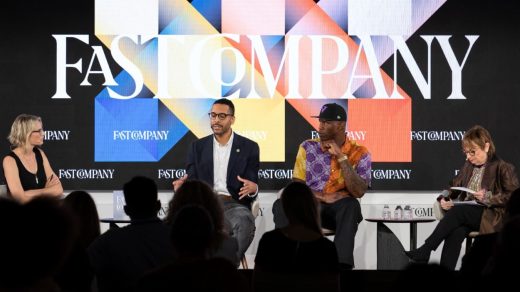The cannabis industry still lacks diversity. Improving access is a joint effort
By Clint Rainey
With large cannabis companies reporting $1 billion in annual revenue and the big dispensary chains operating in more than a dozen states, it’s time to assess what the marijuana industry is doing to achieve social and economic equity, according to three insiders who spoke recently at the Fast Company Innovation Festival.
Today 23 states and the District of Columbia have enacted measures to regulate cannabis for adult recreational use; 38 states license it for medical use. Data collected by Reuters shows that legal marijuana sales nationwide are expected to hit $25 billion this year, while analysts say the market is on pace to exceed $100 billion per year by 2030.
But a lack of diversity within the industry is an ongoing problem, while the war on drugs has disproportionately impacted the same communities that lack access. One frequently cited survey, by Marijuana Business Daily, found that 81% of cannabis business owners are white, roughly 10% identify as Black or Hispanic/Latin American, and 25% are female. Cities and states have launched different equity programs to close that gap, but these programs struggle because participants still lack financial resources and know-how.
“Think about this,” says Al Harrington, a former professional basketball player who spent 16 seasons in the NBA but today runs the largest Black-owned cannabis company, Viola Brands. “You have a gentleman or woman who’s been in jail for the last 5 or 10 years, didn’t graduate from high school—forget college—and they don’t really have any business acumen. Now they need a couple million dollars to start up a business? It just doesn’t make sense.”
Damian Fagon, chief equity officer for the New York Office of Cannabis Management, acknowledges that cannabis so far isn’t a super sexy investment for venture capitalists. “They’re expecting a very different return than you can probably find in cannabis right now,” he says, noting that this expectation has both pros and cons.
States like New York, for example, are treating marijuana like every other agricultural commodity, yet investors and entrepreneurs alike should expect margins to “just be regular margins,” Fagon says. “[It’s] as risky as starting your own wine business.”
Jeanne M. Sullivan, chief investment officer at the Arcview Group who has years of experience working in cannabis, says that while the first step typically involves lining up banking and institutional capital, “we don’t even have that, for the most part. You have to go to high-net-worth individuals, a few funds, maybe some family offices.”
Marijuana’s stigma and its prohibitive classification under the federal Controlled Substances Act are the primary causes: “Many corporations and institutional investors are not even allowed [to invest], because they have vice clauses that will not let them,” Sullivan says.
On a more optimistic note, she says the industry is perhaps witnessing a tide change; in late August, President Joe Biden’s Department of Health and Human Services recommended loosening federal restrictions on marijuana so that it isn’t a Schedule I drug. “We want it de-scheduled,” Sullivan makes clear, whereby someone could “just walk into CVS and buy something.”
But the Biden administration seems more keen to recategorize cannabis as Schedule III, which would recognize that it has “a currently accepted medical use in treatment in the United States,” opening the door for marijuana to one day become approved by the Food and Drug Administration.
In the meantime, certain officials are getting creative on the social and economic equity end. New York’s novel approach goes further than those of other states, but that’s arguably led to a rockier rollout: It reserved the first 100 retail licenses (out of 2,000) for people with marijuana convictions or their family members.
“What we are trying to do differently is lower the barriers for what it takes to open a business,” the Office of Cannabis Management’s Fagon says. The state operates an accelerator program where new entrepreneurs go under the wing of a more experienced dispensary operator who trains and supports them.
Harrington notes that the stigma goes in both directions. “When I first started, I would go to churches and talk about why this was important,” especially in the context of creating jobs and building generational wealth, he says. “At first they would be like, ‘Get outta here.’”
But Harrington began pivoting to the story of his grandmother Viola, after whom his brand is named. He says that years ago he asked her why she was taking so much medication, and she said she had high blood pressure, diabetes, and glaucoma. He says he suggested she try cannabis to at least treat the glaucoma, and she asked him what cannabis was. “I was like, ‘It’s marijuana—weed.’ She looked at me and said, ‘reefer?’”
Harrington’s grandmother agreed to give it a try, and when he checked on her, he says he found her in front of her Bible, with tears in her eyes, saying it was the first time in three and a half years she could read the pages.
“That story,” he adds, “has allowed me to break down a lot of barriers.”
(7)



